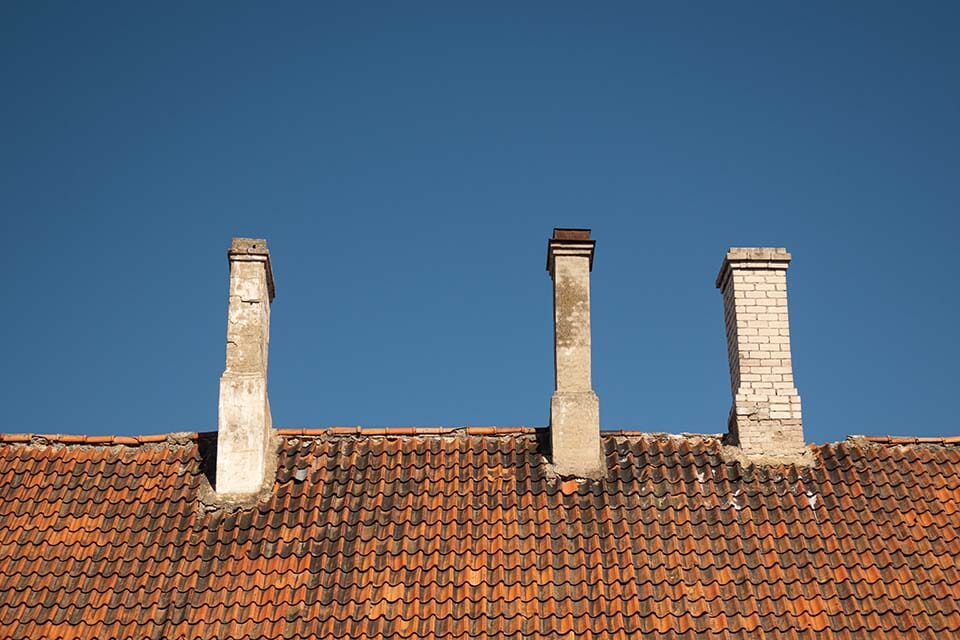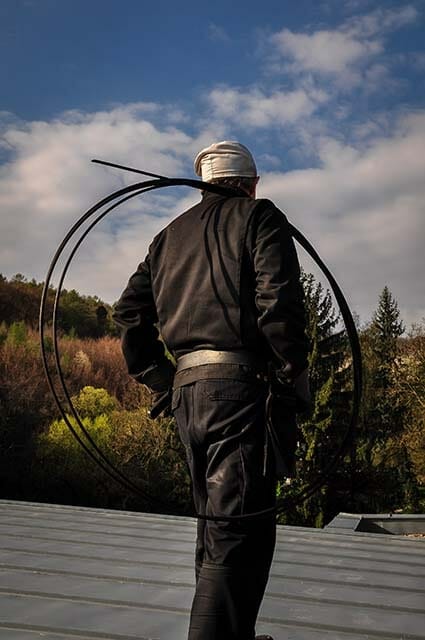- Creosote is a dangerous build-up of soot and tar in your chimney, and can cause chimney fires.
- Signs that you have creosote in your chimney include a campfire smell, black staining around the fireplace, and poor draft.
- If you have glazed creosote, which is the most dangerous kind, it’s important to call a professional to remove it.
- There are several things you can do to prevent creosote buildup, including having your chimney inspected and swept annually.
It was the middle of winter and I had been noticing a strange smell in my house. It smelled like a campfire, and I knew that meant there was creosote in my chimney.
I called a chimney sweep to come and take a look, and he told me I had glazed creosote build-up, which was a serious fire hazard.
He said it would be difficult to remove and would require an industrial-grade creosote remover.
I did some research online and found a local contractor with decent Google Reviews. I called them to schedule an appointment, and they sent someone out to my house right away.
The technician explained that glazed creosote is an extremely dense and sticky layer that is made up of layers of creosote that have formed and hardened over one another.
He said it was a serious fire hazard and would be difficult to remove.
The technician sprayed an industrial-grade creosote remover into the flue, saturating the area.
The product remained in the chimney for 3-5 days to allow the chemical reaction to happen, breaking down the creosote compound into a flaky and brushable substance.
After 5 days, I called a local chimney sweep back and asked them to come and clean my chimney. They did so quickly and efficiently, and now my chimney is safe and clean!
Contents
How to remove glazed creosote from the chimney
Glazed creosote is a hard surface that is attached to a chimney. The glaze is caused when creosote dries out, so removing the substance from your chimney can be difficult.
You can use hot water or boiling vinegar to melt the glaze, but if you try this method, be careful. It can be dangerous when ash or tar is involved.
Glazing of creosote happens because of the dirty chimney and stagnant air inside the room with high humidity and low temperature that help crystallize the substance on one side of your equipment.
If you neglect cleaning your chimney, it will also crystallize over time. Continue reading, and you will find some tips to help remove the glaze.

- Wear rubber gloves
- Boil water and wipe it on the glazed area
- Wait until the water evaporates
- Dry the chimney
Remove glazed creosote from the chimney as soon as possible.
The following steps usually work:

Step 1
Turn off your gas and electricity to prevent any fire accidents.
Step 2
Close the fireplace damper and use a shop vac to suck up any loose ashes blocking the flue or chimney pipe. Place a shop vac hose into the fireplace flue, reaching up around your fireplace damper, getting in between the damper casing, and glazing.
Step 3
Use a blowtorch to heat the glazing around the fireplace damper. A blowtorch will help you remove creosote tightly adhered to your fireplace damper. Use a heat gun or blowtorch with a low, wide flame, and keep your face away from the area while you are using it. You do not want to catch yourself or anything else on fire!
Step 4
Pour a gallon of boiling or steaming water over the glazing around your fireplace damper to loosen it up further. Remember that water can expand and create steam under pressure, so be careful not to accidentally cause flooding in your home.
Step 5
Remove the damper and blowtorch, allowing the fire to come up from the fireplace.
Step 6
Turn off your ignitors and open the damper to allow air to enter.
Step 7
Use a garden hose, blow-dryer, and hair dryer with a heat protectant spray to dry out your fireplace flue and chimney. Depending on how badly glazed your chimney is, you may need to repeat this step several times.
Step 8
Vacuum the chimney again after you have had time to let the creosote dry out and pick up any junk that has fallen into it, such as ashes from old fires, clumps of leaves, etc.
Step 9
Turn on your gas and electric ignitors to allow the fireplace to heat up again.
Step 10
Place a shop vac hose into the fireplace flue, which will reach up around your fireplace damper, getting in between the damper casing and glazing. Use a shop vac to suck up any loose ashes.
Step 11
After you have blown out all the ash, use a blowtorch to heat the glazing around your fireplace damper. A blowtorch will help you remove creosote tightly adhered to your fireplace damper. Use a heat gun or blowtorch with a low, wide flame, and keep your face away from the area while you are using it. You do not want to catch yourself or anything else on fire!
Step 12
Pour a gallon of boiling or steaming water over the glazing around your fireplace damper to loosen it up further. Remember that water can expand and create steam under pressure, so be careful not to accidentally cause flooding in your home.
Step 13
Remove the damper and blowtorch, allowing the fire to come up from the fireplace.
Step 14
Turn off your ignitors and open the damper to allow air to enter.
Step 15
Use a garden hose or blow-dryer with a heat protectant spray to dry out your fireplace flue and chimney. Depending on how badly glazed your chimney is, you may need to repeat this step several times.
Conclusion
If you can’t remove the glazed creosote, buy a professional chimney sweep and remove the glazing. A professional chimney sweeper can tell you whether you will need to replace your chimney liner or if there is something else wrong with it.
If money is tight, try to get estimates from local contractors about how much it will cost for a professional job.
